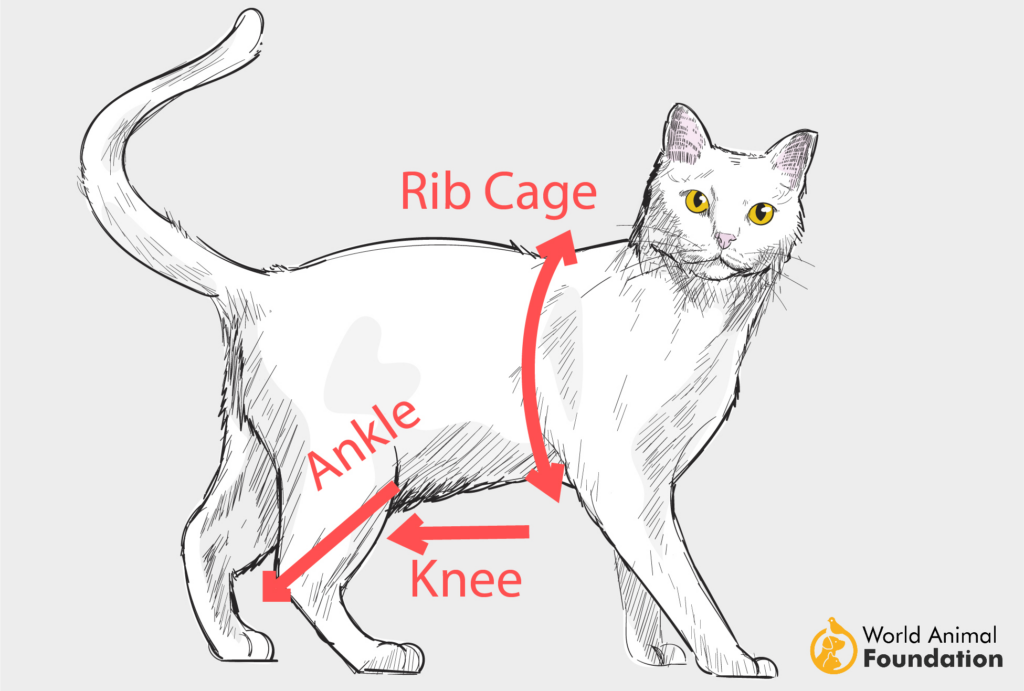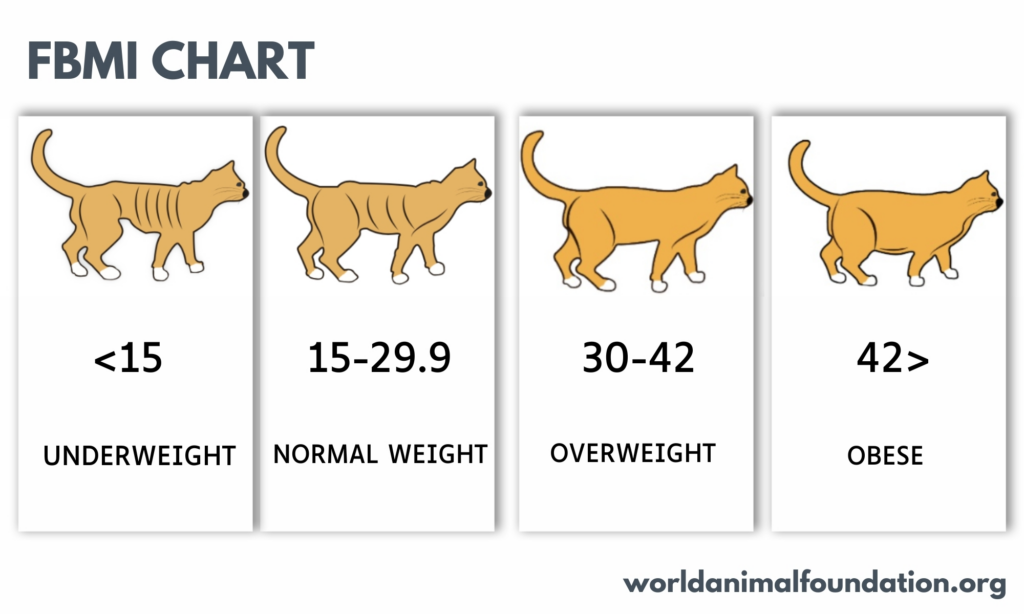Ever wondered if your feline friend is fabulously fit or just fluffily full? Feel free to use our cat BMI calculator and discover the perfect balance between health and those irresistible cuddles!
Disclaimer: Our calculator is intended for informational purposes only and should not replace professional veterinary advice. Always consult a veterinarian for accurate health assessments.
Cat’s BMI Calculator
General Insight to Cat BMI Calculator
The Body Mass Index (BMI) is a tool predominantly used for humans to gauge whether an individual's weight is healthy in relation to their height. However, for cats, veterinarians and pet experts generally utilize body condition scoring systems. These systems evaluate a cat's physique to determine if they're underweight, at a healthy weight, overweight, or obese.
The concept of a feline body mass index takes inspiration from human BMI, but it's worth noting that the metrics and criteria differ greatly due to the unique anatomy and physiology of felines.
Taking Measurements for Cat’s BMI Calculator

The measurements for the cat's BMI calculator focus on lower back leg length and circumference of the rib cage. The accompanying image displays a cat with labeled measurements for your convenience:
- Measure the girth around the cat's rib cage (just behind the front legs)
- Measure the length of the lower leg from the knee to the ankle.
Make sure your cat is standing with an upright head position while you're taking these measurements.
Formula Used to Calculate Cat’s BMI
Enter the measured values into the calculator. The calculator utilizes the following formula to derive the Feline Body Mass Index (FBMI):
FBMI = (rib cage circumference 0.70622) - (leg length 0.9156) - leg length.
Please note that when referring to "rib cage," we are indicating the circumference, while "leg" pertains to the length.
Remember, while the concept of a cat's body mass index is intriguing, cat health and weight should ideally be assessed with the guidance of a veterinarian using comprehensive methods like body condition scoring.
Sidenote: If you happen to own a dog as well, use our dog BMI calculator to learn more about your pup's health.
Cat’s BMI Chart

Cat's body mass index is important as it helps determine whether a cat is underweight, overweight, or within a normal range. It's a valuable indicator of their overall health and can guide caregivers in managing their feline's diet and exercise to prevent potential health issues.
Steps to Assist Your Cat in Losing Weight
Obesity in cats is a growing concern, and around 50% of cats visiting veterinary clinics are either overweight or classified as obese nowadays. It's vital to approach weight loss in a safe and effective manner to ensure the overall health of your feline friend.
Here's a breakdown of the steps you can follow to help your cat lose weight:
- Veterinary Consultation
Before implementing any weight loss regimen for your cat, consult with a veterinarian. They can provide an accurate weight measurement, determine an ideal weight goal, identify potential health issues, and offer a recommended calorie intake.
- Dietary Adjustments
Switch to higher protein content, low-carb diet as cats are obligate carnivores, so their primary diet should consist of meat. Avoid free-feeding. Instead, measure how much food your cat is consuming based on the vet's calorie recommendation. Limit treats as they can be high in calories, so give them sparingly or not at all.
Remember, chocolates are a strict no-no for our felines; you can use our cat chocolate toxicity calculator to assess the health risks involved in case your kitty eats it accidentally.
- Increase Physical Activity
Interactive toys like feather wands or laser pointers can motivate your cat to move. Cat trees and perches encourage climbing and jumping. Schedule regular play sessions to engage your cat in activity.
- Monitor and Track
Use a home scale or visit the vet to track weight loss progress. If your cat isn't losing weight or too quickly, consult your vet to adjust their regimen.
- Hydration
Ensure your cat has fresh water available at all times. Cats on a dry diet particularly need access to plenty of fresh water. Consider incorporating or transitioning to wet food to increase hydration. Use our cat water intake calculator to estimate the amount of water your kitty should drink daily.
- Avoid Rapid Weight Loss
It can lead to hepatic lipidosis, a potentially fatal liver disease. Cats metabolize body fat differently than other animals. When they lose weight too quickly, their liver processes excess fat, which can result in lipidosis.
- Regular Check-ins with the Veterinarian
As your cat undergoes its weight loss journey, periodic check-ins with the vet ensure everything is on track and that no health issues arise.
Remember, each cat is unique, so what works for one might not work for another. Always approach your pet's weight loss with patience, persistence, and plenty of love.
Steps to Assist Your Cat in Gaining Weight
Just as with obesity, being underweight can also be a health concern for cats. Whether due to age, illness, stress, or other factors, most cats need assistance in gaining weight. Here are some weight-managing tips to help your cat gain weight safely:
- Veterinary Consultation
Before trying to help your cat gain weight, it's crucial to understand the underlying reason for the weight loss. Underlying issues, such as hyperthyroidism, diabetes, gastrointestinal diseases, or dental problems, might be the culprits.
- High-Calorie Cat Food
Switch to a high-calorie, nutrient-dense cat food formulated for weight gain or kitten food. These often have a higher protein and fat content, which can aid in weight gain. You can discover the perfect nutrition balance for your cat with our cat calorie calculator to ensure their health and happiness.
- Wet Food
Wet or canned food can be more palatable to some cats and might stimulate their appetite more than dry food.
- Frequent, Small Meals
Offering food more frequently, such as 4-5 times a day, can help increase total caloric intake. Some cats might eat more when offered smaller quantities multiple times a day.
- Supplements
There are dietary supplements available, like MCT oil or fish oil, which can be added to your cat's diet for extra calories. Always consult with your vet before introducing any supplements.
- Entice Eating
Warming up the food, adding broth, or sprinkling a bit of tuna on top can make it more appealing. Rotate different food flavors and textures to keep your cat interested.
- Avoid Stress
Cats might eat less in stressful environments. Ensure that feeding locations are quiet, safe, and away from high-traffic areas or aggressive pets.
- Monitor and Track
Regularly weigh your cat to monitor progress. Adjust the right amounts and frequency based on weight gain observations.
Remember, the primary goal is to promote healthy weight gain, ensuring your cat's overall well-being. Always consult with a veterinarian when making significant changes to your cat's diet or lifestyle.
FAQs
What is BMI?
BMI, or body mass index, is a tool originally designed for humans that calculates a ratio of an individual's weight to their height squared. It assesses whether a person is underweight, normal weight, overweight, or obese.
How to maintain my cat’s weight?
Maintaining your cat's weight involves a balance of proper nutrition and regular exercise. Here are some steps:
- Feed a high-quality cat
- Measure portions
- Engage in regular exercise
- Regular vet check-ups
- Monitor food intake and adjust
Conclusion
Understanding your cat's body condition goes beyond mere numbers. With tools like the cat weight calculator, we merge science with care, ensuring our feline friends enjoy the perfect balance of health and happiness. After all, a well-balanced kitty is a content and cuddly companion!


